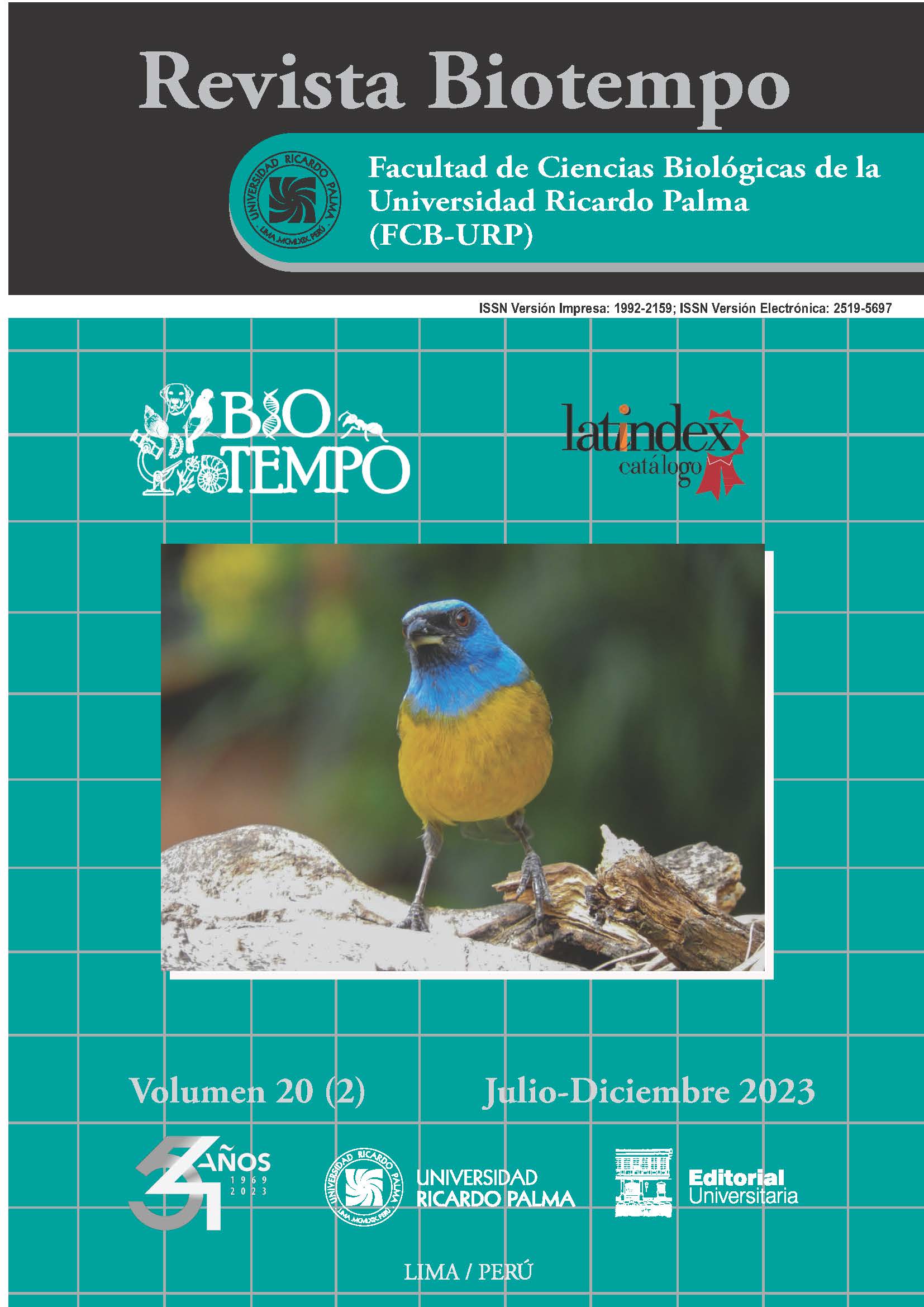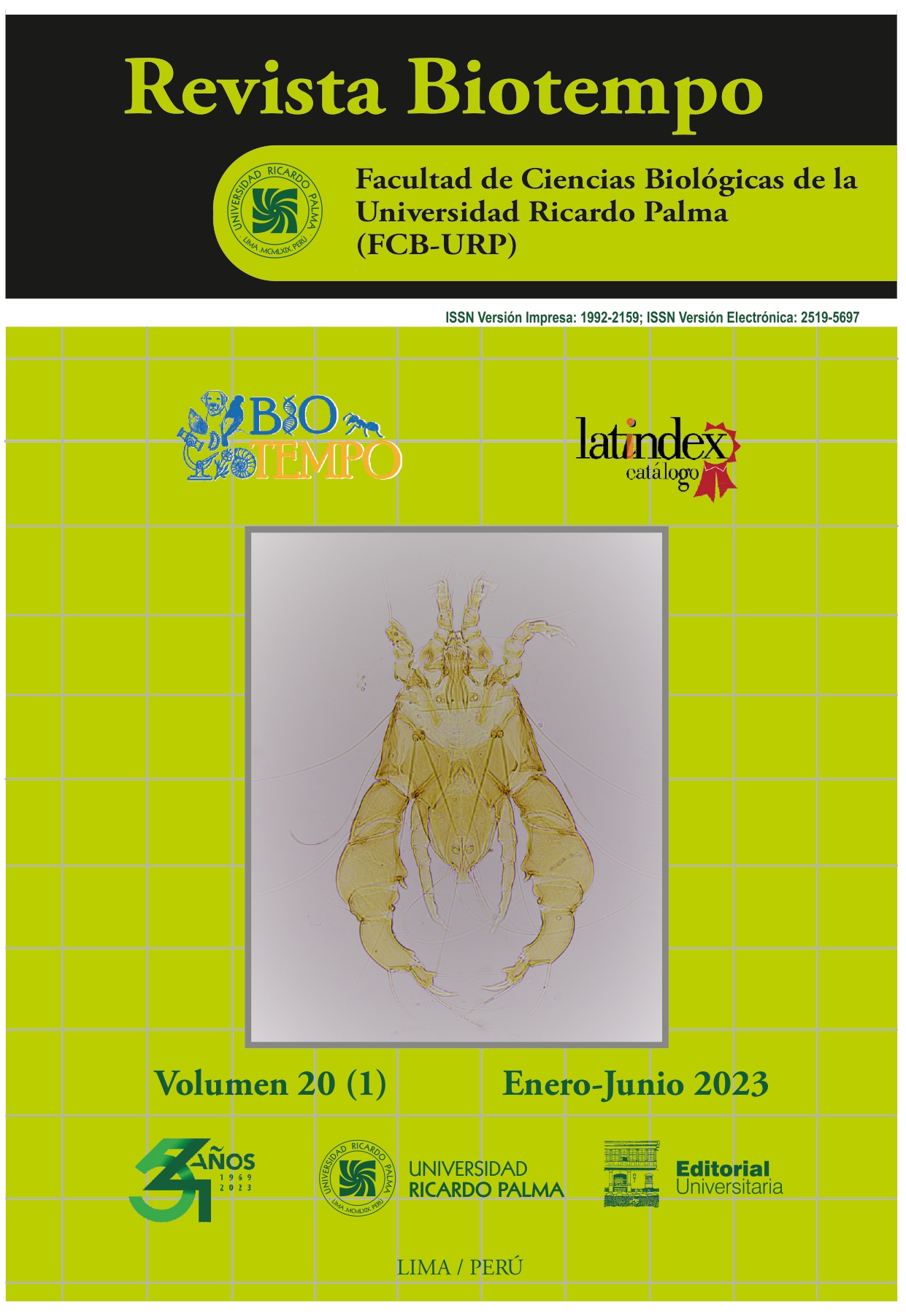Comportamiento reproductivo de Chroicocephalus cirrocephalus (Vieillot, 1818) (Charadriiformes: Laridae) y Coragyps atratus (Bechstein, 1793) (Cathartiformes: Cathartidae) en el humedal costero humedal de Villa, Lima-Perú
DOI:
https://doi.org/10.31381/biotempo.v20i2.6186Palabras clave:
anidación, Chroicocephalus cirrocephalus, Coragyps atratus, cuidado parental, etograma, Humedal de VillaResumen
El Humedal de Villa, ubicado en Lima, Perú, alberga una notable diversidad faunística, destacando la avifauna. La reproducción de las aves es un elemento crucial para la historia natural de estas especies, siendo esencial estudios para orientar estrategias de conservación y gestión tanto de las poblaciones de aves como de los ecosistemas que habitan. El objetivo de este estudio fue caracterizar y evaluar aspectos reproductivos de la Gaviota de capucha gris [Chroicocephalus cirrocephalus (Vieollot 1818)] y el Gallinazo de Cabeza Negra [Coragyps atratus (Bechstein, 1793)], como la biometría de nidos, huevos y el comportamiento reproductivo. Se realizó el seguimiento de nidos entre los meses de mayo a septiembre del 2023. Para C. cirrocephalus se encontraron 12 nidos en parches de “grama dulce” Paspalum vaginatum Sw.; mientras que, para C. atratus se registraron cuatro nidos en la base de árboles de “molle costeño” Schinus terebinthifolia G. Raddi. Para ambas especies se observó el desarrollo de los polluelos a juveniles. Asimismo, se realizó un etograma de comportamientos para ambas especies, para C. cirrocephalus se registró un total de 40 comportamientos específicos, siendo la categoría de “reproducción y cuidado parental” más importante durante incubación; mientras que, para C. atratus se registró un total de 27 conductas específicas, siendo la categoría “alerta” más importante entre individuos adultos y juveniles.










